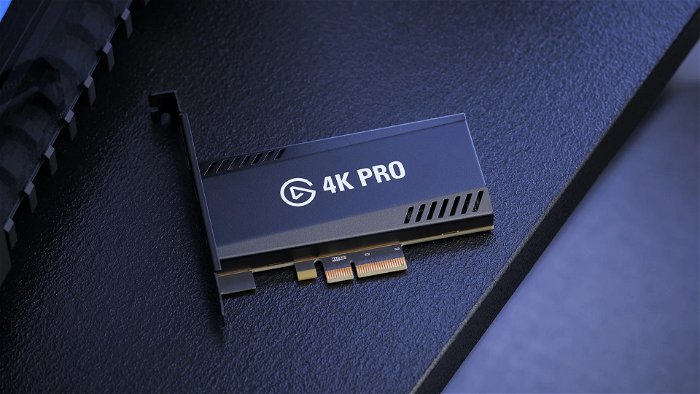Internal capture cards are a gift to content creators. They make for a cleaner setup, and generally, they get the most out of your PC’s power. Elgato, a mainstay in the capture card market, has released their latest internal capture card, the Elgato 4K Pro, which can take whatever you give it and pass it through, and it can capture more than ever before.
The name of the capture card is something we really need to focus on for a second. The 4K Pro is the successor to the 4K60 Pro and 4K60 Pro Mk. 2, which may actually sound like the more recent versions if you are just looking at the names. What may also be misleading on paper are some of the specs when comparing the Elgato 4K Pro with its predecessors. A few small changes go a really long way.

The Elgato 4K Pro and 4K60 Pro Mk. 2 have a lot of similarities. They both support a variable refresh rate when passing through video, and they are both capable of capturing HDR10 and 4K/60 resolutions. The big difference that opens the door to a lot more interesting specs on the Elgato 4K Pro capture card is its upgrade to HDMI 2.1 from 2.0. It doesn’t sound like much, but it’s a lot.
It does a much more reliable job capturing 4K/60, but HDMI 2.1 supports much higher refresh rates. While the Elgato 4K60 Pro Mk. 2 does 1080p/60, 1440/60 and 4K/60, the 4K Pro can capture up to 240 frames per second at 1080p and can pass through 4K/240 and even 8K/60 video—the highest 4K frame rate I was able to find on any current capture card, including AVerMedia, meaning that whatever your monitor can display, the Elgato 4K Pro can give you.
“The big difference that opens the door to a lot more interesting specs on the Elgato 4K Pro Capture Card is its upgrade to HDMI 2.1 from 2.0. It doesn’t sound like much, but it’s a lot.”
The Elgato 4K Pro capture card is a PCIe 2.0 x4 card, giving you tremendous speeds for passing through and capturing your data. Setup could also not be easier. It is essentially plug-and-play. I say essentially because Elgato’s software is a fantastic tool that shouldn’t be overlooked, but we’ll talk about that in a bit. All of that being said, the 4K Pro will appear in OBS or whatever application you want as soon as it is plugged into your motherboard.

I tested capturing both through a series of Xbox Series X games and using my Sony A7iii. While testing the games (Cyberpunk 2077, Hogwarts Legacy and Starfield), I looked at the video being fed into OBS as well as passing through to a second monitor. With the Elgato 4K Pro capture card, there was no drop in quality, nor was there a delay between the two views. I was even able to easily game directly on my OBS. I’ve tried this before with a couple of external capture cards, and with the much more evident lag, it was a considerably tougher proposal.
“With the Elgato 4K Pro capture card, there was no drop in quality, nor was there a delay between the two views.”
Testing the video capture from your camera is a little more subtle than testing games, but we found no glitching, tearing or anything else that one might find troublesome. The colour accuracy of the captured video is fantastic on the Elgato 4K Pro. There is no visible loss of quality between passthrough and capture. Since camera capture is what I use my capture card for the most, being a single-PC streamer, It’s crucial that my camera quality looks its best. Also, most of what I do has me at full screen, so being able to capture at 4K/60 gives me so much freedom to zoom in on my face without losing any quality for my videos.

At $279.99 USD, the Elgato 4K Pro is only $30 more than its predecessor, the 4K60 Pro Mk. 2, so if you are getting an internal capture card for the first time, the 4K Pro is a no-brainer. The question really comes to whether the latest card is worth the price of upgrading from a previous model, the answer to which would be a resounding yes, particularly if you are gaming at higher frame rates. HDMI 2.1 is a game changer with its ability to give you up to a 240Hz refresh rate, so gaming computers with a beefy GPU can still be represented properly on your monitor even when passing through the 4K Pro.
Being limited to 60 fps with the previous models will be incredibly limiting for some people, with next-gen consoles running 120 fps and many PC gamers running that frame rate at least. Capturing at 60 fps isn’t such a big deal since that’s the most you are putting out to any streaming or video platform, but how you experience the content on your end matters, particularly when gaming. The Elgato 4K Pro capture card is your chance to maximize your gaming and capture experience simultaneously.






